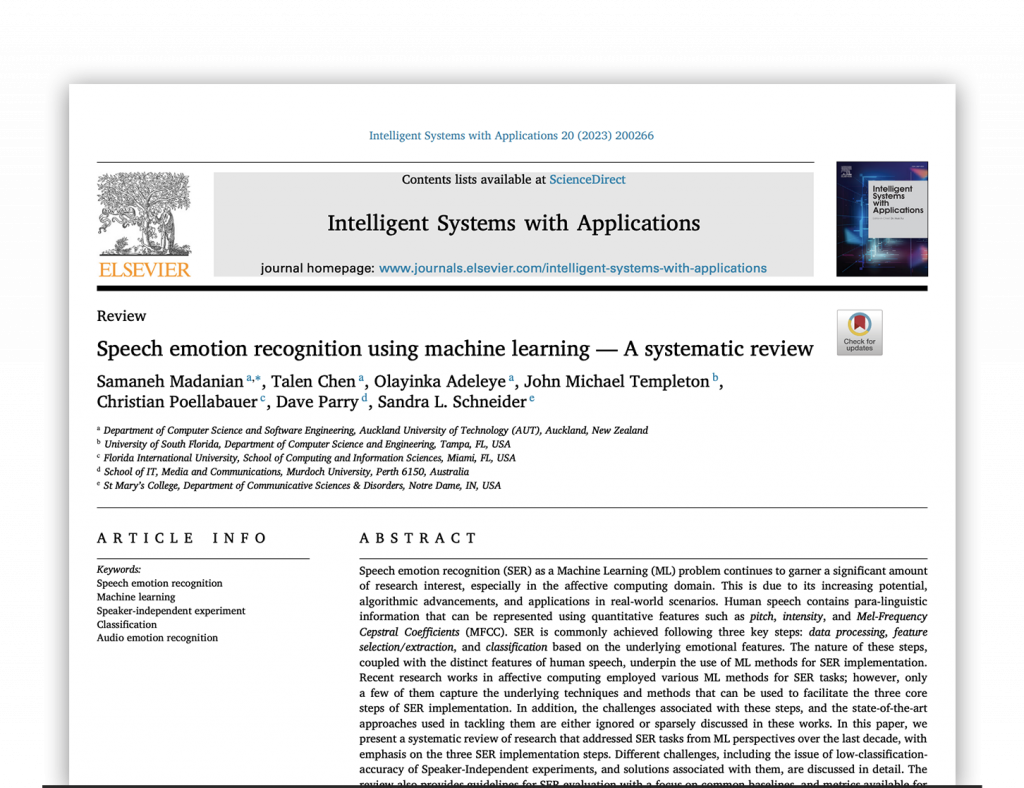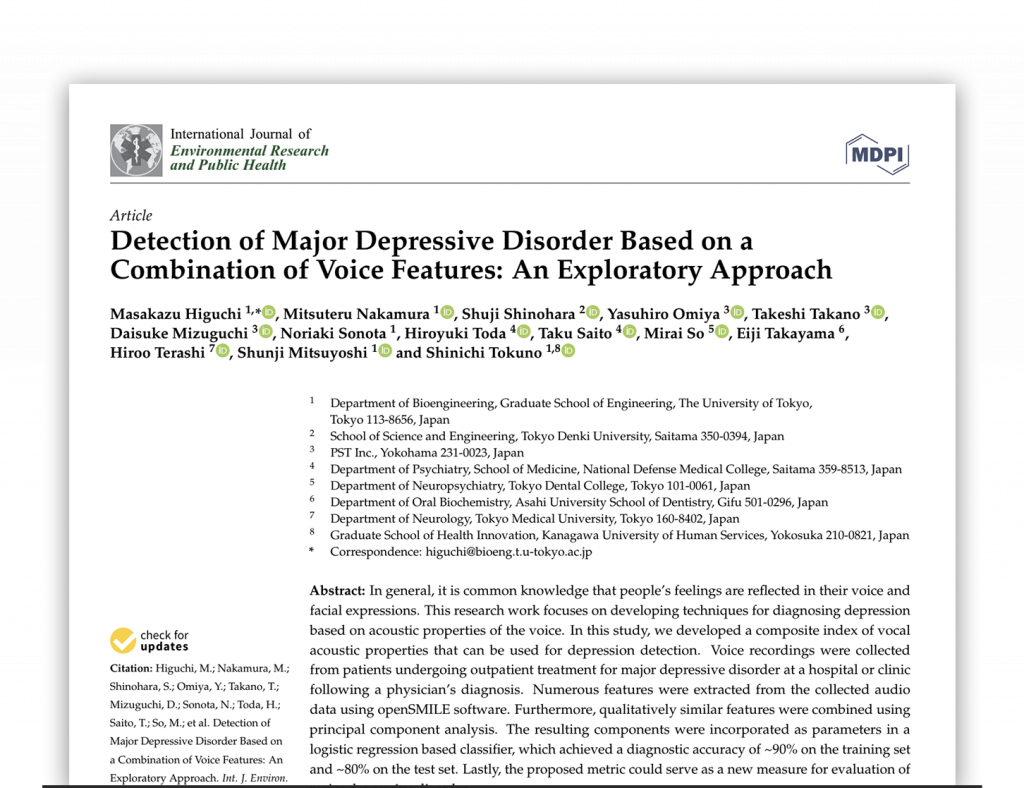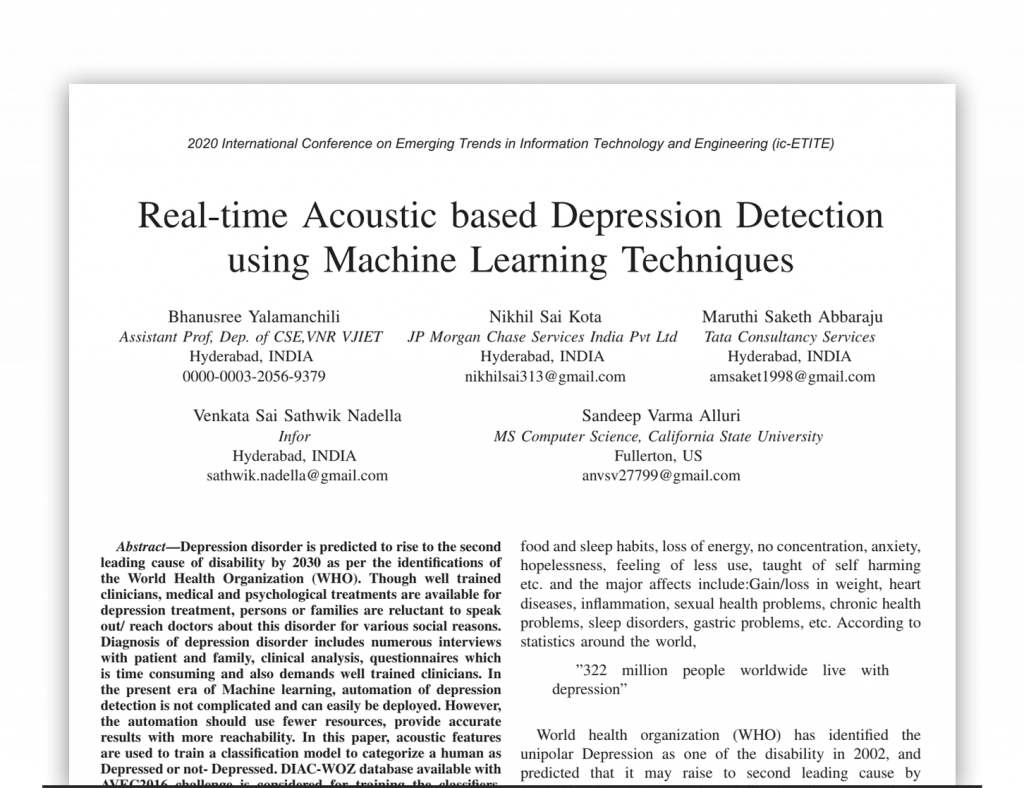Read More
& Clinical Studies – In The Press
Read More
Using AI to Detect Vocal Biomarkers of Depression
State-of-the-art deep learning models, such as convolutional neural networks (CNNs) and recurrent neural networks (RNNs), have been trained on labeled datasets to differentiate between healthy and depressive speech. These models analyze both prosodic features (intonation, rhythm) and spectral characteristics (frequency, timbre) to achieve high sensitivity and specificity in detecting depression.
Prosodic indicators can be challenging for human ear to detect consistently, especially during brief clinical interactions. However, AI-driven analytical tools can detect these patterns objectively. By leveraging advanced machine learning algorithms trained on extensive data sets, these tools offer a reliable way to identify vocal markers of depression.
The use of AI-powered vocal analysis offers several advantages over traditional diagnostic approaches. It is non-invasive and avoids the discomfort or potential biases of in-person interviews. These tools can also be easily integrated into remote healthcare settings, allowing clinicians to monitor patients regularly and with minimal interruption. This real-time, continuous insight supports earlier detection of depressive episodes, timely intervention, and more personalized care.
By incorporating AI-driven vocal biomarker detection technologies into clinical workflows, providers can improve diagnostic accuracy, reduce the stigma surrounding mental health assessments, and intervene earlier when it matters most. In the long term, this proactive, data-informed approach may help improve patient outcomes, reduce healthcare costs, and better address the growing challenges of depression.
A Major Disease Still Underdiagnosed
Depression remains a major–but often underdiagnosed–public health issue in the United States, affecting nearly 30% of adults at some point in their lives. Its prevalence continues to rise, especially among young adults and women. Data also highlight a clear gender disparity: 36.7% of women report having received a depression diagnosis, compared to 20.4% of men.
In primary care, depression frequently goes undiagnosed due to several overlapping factors. It often coexists with other medical conditions, such as anxiety disorders, chronic pain, cardiovascular disease, or diabetes, which can mask or complicate its identification. Patients may attribute their symptoms solely to these concurrent health issues, delaying appropriate diagnosis and care. In addition, many patients hesitate to speak openly about emotional distress, whether due to fear of stigma or simply not recognizing their symptoms as signs of depression. On the clinical side, general practitioners may lack the time, training, or resources to confidently identify and manage mental health conditions, contributing to overlooked symptoms and delayed diagnoses.
Timely identification of depressive symptoms is critical, as delayed diagnosis can lead to worsening outcomes, including an increased risk of chronic illness and suicide. More than 49,000 people in the U.S. died by suicide in 2023 alone,making it one of the leading causes of death among young Americans. Untreated depression also carries a significant economic toll, contributing to millions of lost workdays annually and costing billions of dollars in productivity losses.
These alarming realities highlight the urgent need for improved depression screening protocols, proactive training for healthcare providers, and broader access to mental health services–critical steps toward better patient outcomes and reduced societal and economic burden.
Clinical Studies
Speech Emotion Regognition Using Maching Learning – A systematic Review
Detection of Major Depressive Disorder Based on a Combination of Voice Features: An Exploratory Approach
Real-time Acoustic based Depression Detection using Machine Learning Techniques
This study presents an automated method for real-time depression detection using voice acoustic features. Employing SVM classification and SMOTE analysis to handle class imbalance, the model achieved 93% accuracy, providing efficient remote assessment. > Link
In The Press
2 in 3 physicians are using health AI—up 78% from 2023
Summary: An AMA survey of nearly 1,200 physicians shows 66 % were using health-care AI in 2024—a 78 % leap from 38 % in 2023. Doctors welcome AI for reducing documentation burdens, yet say they still need stronger oversight, privacy guarantees and smoother EHR integration before full adoption. >Link
Most Americans experience a mental health issue, but few talk to their primary care physician
Summary: Fierce Healthcare reports that 69 % of adults acknowledge at least one mental-health issue, yet only 35 % have ever mentioned it to their primary-care doctor. Stigma and weak referral networks keep the topic off the exam-room agenda, so some systems are embedding behavioral-health specialists right in primary care to close the gap. >Link
Why should doctors be trained in Psychology?
Summary: Psychologs argues that every physician should receive psychosocial training so they can grasp patients’ emotions and day-to-day realities. Skills that drive better adherence and outcomes. Such psychological know-how also lets doctors back up caregivers and tackle mental-health crises, turning routine treatment into genuinely holistic care. >Link




